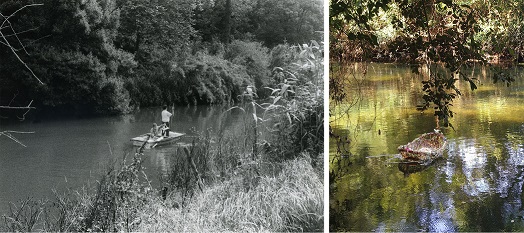- CA2M MUSEUM
- Thinking
- THAT BLUE BUZZING SOUND*
THAT BLUE BUZZING SOUND*

Even if we wanted to, we cannot kill our dead. The dead have summoned us to undertake certain tasks, and so we carry them around with us in our lives every day, in little gestures and flashes of very intense sensations. How can we share these losses, the part of them that has stuck to us, their strange temporalities, the hankering to bury our heart, the pain of Blue — the uncertain stumbling Buzz —? I wanted to build a boat, and take it down river, to sail its waters and once again bind me to the branches and birds that bring back so many memories. Some people want to light a fire, or perhaps burn the piles of straw and wood gathered by so many hands one late summer’s evening. There are people who sew fruit peel, stitching those dry skins to conjure friends that had to leave us, very soon and very far away.
There are no words, our bedraggled eyes no longer see, perhaps only some gestures can be both offering and memorial... As if together we watched over a bonfire to keep alive through our bodies and stories someone who, though no longer with us, will always be there. And because we are forced to look the other way, not to believe, to fall ill, then giving ourselves our own rituals is the basic task of the living. Because death in the end is only for us, those who remain behind, those who are brave enough to provide room for a love that is eternal and that only transforms. Mourning is a political task, it builds community, it is a practice of care that reproduces life. In mourning we are together, the feeling of isolation is only the symptom of a society drowning in silence. I speak with my friends about this, that I believe that our grandmothers were the last to live with a sensibility that understood death as a part of life, that they knew how to meet again on earth, that now perhaps it was our task to create other rituals, other ways of being, of living and of dying. Sometimes we don’t know how, nor even understand why, it is just a flash, an intuition, a desire. Maybe it is only a question of listening, and of a deep love. And in that we are never alone.
Principal researcher: Marta Echaves
* Title inspired by Emily Dickinson’s poem 465 to death.